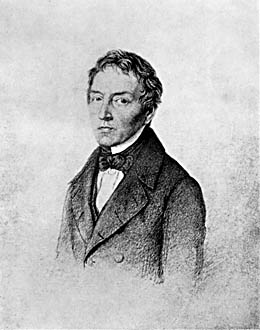 Other forms of fire manufacture were also developed alongside the match.
In 1823 Johann Wolfgang Döbereiner observed that a jet of hydrogen,
when directed at a platinum sponge from a distance of 4 cm so that it was
premixed with air, caused platinum to become red-hot, then white-hot and
then the hydrogen jet ignited spontaneously. He invented the Döbereinersche
Feuerzeug (Döbereiner Lighter or Lamp), a pneumatic gas lighter. Hydrogen,
generated from the reaction between zinc and sulphuric acid, passes through
an opening and is directed to a platinum sponge that is supported by platinum
wire. On contact with the platinum surface the hydrogen ignites, as, by
co-ordinating with the platinum, the hydrogen-hydrogen bond is weakened
and the hydrogen molecule may then be oxidized. The hydrogen flame can
then be used to light a fire. By 1828 20,000 of these lighters were in
use throughout Germany and England.
Other forms of fire manufacture were also developed alongside the match.
In 1823 Johann Wolfgang Döbereiner observed that a jet of hydrogen,
when directed at a platinum sponge from a distance of 4 cm so that it was
premixed with air, caused platinum to become red-hot, then white-hot and
then the hydrogen jet ignited spontaneously. He invented the Döbereinersche
Feuerzeug (Döbereiner Lighter or Lamp), a pneumatic gas lighter. Hydrogen,
generated from the reaction between zinc and sulphuric acid, passes through
an opening and is directed to a platinum sponge that is supported by platinum
wire. On contact with the platinum surface the hydrogen ignites, as, by
co-ordinating with the platinum, the hydrogen-hydrogen bond is weakened
and the hydrogen molecule may then be oxidized. The hydrogen flame can
then be used to light a fire. By 1828 20,000 of these lighters were in
use throughout Germany and England.
The modern cigarette lighter has a pneumatic gas delivery, usually of butane, which is ignited by a "lighter flint mechanism". Lighter "flints" are not actually flint; instead they are composed of a mixture of rare-earth and similar metals (mostly cerium). The "flint" is rubbed against a serrated hard steel wheel or rasp. As with the flint-pyrite method: particles are detached with sufficient energy that they burn in the air, however in this case the particles are derived from the "flint" rather than from the steel.
Back to the Welcome Page